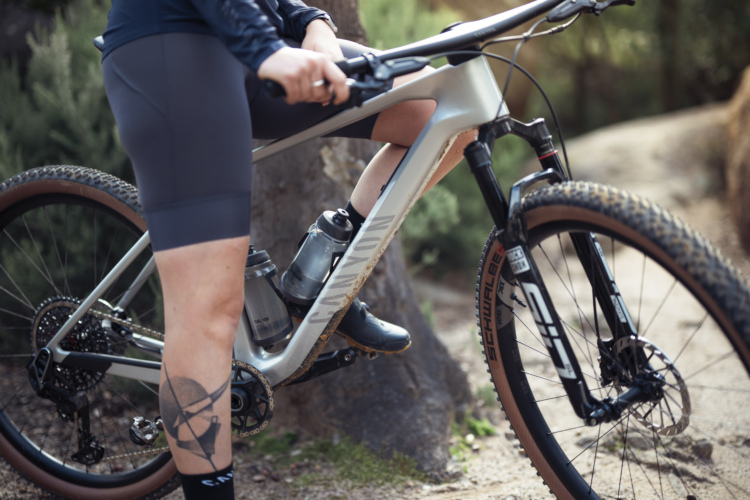
As far as mountain bike GPS units go, the Bryton Rider 15 neo, priced at about $70 (available at Amazon), appears to be a steal. I decided to give it a test to see which features the brand was able to include at this affordable price point, and which ones they left out to keep the price low.
Rider Neo 15 – Form factor
The Bryton Rider 15 neo features a 2-inch, monochrome LCD screen. If you’re wondering about pixel resolution, or you’re Googling the letters L-C-D, clearly you’re from a younger generation; think old-school digital watch or grandma’s alarm clock. The screen also has a backlight for illumination at night. Overall the unit is small and weighs just a hair under 50g without the mount.
Bryton uses a quarter-turn mount system, and a handlebar mount is included in the box along with stretchy bands of varying sizes to fit most bars. I easily mounted my test unit to a set of 35mm bars using the included materials. The Rider 15 neo should also fit quarter-turn Garmin mounts if you have any laying around, or if you want to use third-party mounts like the ones from K-Edge.
Bryton says the Rider 15 neo should get about 16 hours of action from the integrated rechargeable battery. Rounding out the feature list, the device includes Bluetooth Low Energy (BLE) connectivity for third-party accessories like heart rate monitors, it connects to multiple satellite constellations including GPS and Galileo, and has a built-in temperature sensor.

Rider Neo 15 – In action
It took me a while to get the hang of the Bryton Rider 15 neo. It’s not the most intuitive GPS unit I’ve used, despite the simple look and limited feature set. The power button is actually located on the back of the GPS, which can be tough to press when the unit is mounted to the bars. Aside from the power button, there are only two buttons which means each has to perform a number of functions. The one on the right starts and stops the device, while the one on the left toggles the data displayed, and also turns the backlight on. Simple enough.


I set up my device to show current speed in the main data field, and to toggle the lower field between metrics like total distance, current altitude, and elapsed time. There’s a free Bryton smartphone app that can be used to customize which fields the device displays, and in my experience it works pretty well. With the app connected and a smartphone in your pocket the Rider 15 neo can also display alerts for text messages, though sadly not the message itself. At the end of a ride, data from the activity can be synced to the Bryton app and then sent on to any third-party services you’ve authorized like Strava.
In addition to ride metrics, the display also has an icon to display current heading and temperature. I found the temperature reading to be fairly accurate.


Speaking of accuracy I tested the Rider 15 neo alongside a few other GPS units to see how it fared. Informally, the Rider 15 neo seemed to under-report ride distances compared to other devices, and a more formal track test confirmed this. In two, one-mile tests in ideal conditions the device measured 0.96 and 0.97 miles for an average of -3.5%. Bryton’s more powerful (and more expensive) Rider 750 fared better, consistently measuring four laps at 0.98 miles or -2%. An analysis of the data suggests the polling frequency — that is, the number of times the device records a GPS breadcrumb during a ride — is lower than the other devices tested, including the Bryton Rider 750. This can cause under-estimates of the distances traveled, especially through turns. It does not appear there is a way to adjust the polling frequency on the device or in the Bryton app.
In the same test, the Rider 15 neo also reported the biggest variation in elevation (+13/-10ft.) for the flat track among all devices.
The screen offers decent visibility in most conditions, though the glossy cover does throw a mean glare depending on the angle of the sun. The large numbers are easy to view at a glance, though the small icons that indicate the unit of measure can be tough to make out at speed.
Despite its limited feature set and ballpark accuracy, I do think the Bryton Rider 15 neo could be a decent choice for riders on a strict budget, or for those upgrading from an old-school, wheel-based cycle computer. The wireless features particularly set the Bryton apart from no-name GPS units at similar prices.
- Price: $70
- Available at Amazon and other online retailers.
Pros
- Inexpensive
- Wireless sync and smart notifications
- Customizable data views
Cons
- No map view
- Icons are difficult to decipher
- Low resolution screen




















0 Comments